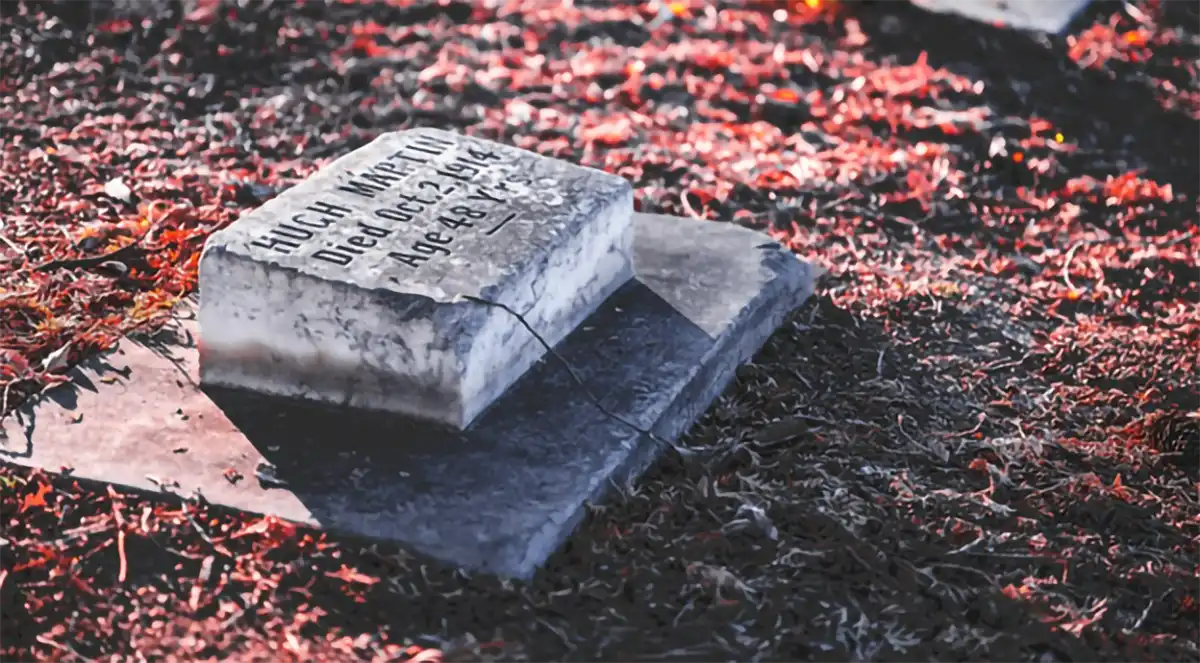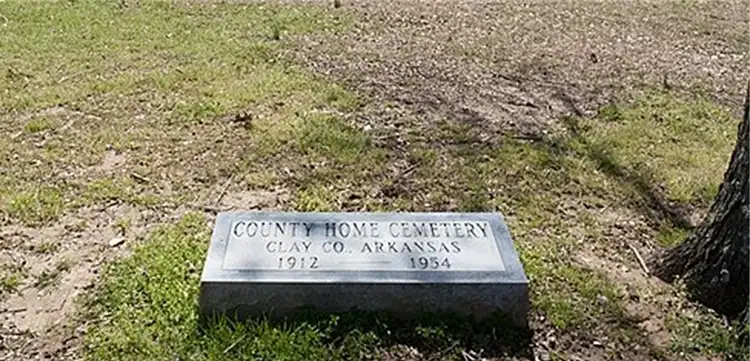
This summer, a construction crew unearthed a surprising discovery in northwest Tucson, Arizona. Human bones. Turns out they were from a person buried on once-private land, by their family, some 50 years ago.
Which brings up a question some deed holders ask: Is it legal to bury a human body on residential property? The answer is yes (although not in Indiana, California, DC, or the state of Washington).
This is about making a home cemetery; and yes, you’ll be creating a permanent deed restriction. In this overview, we cover the pros and cons of home burials; regulations; deed impacts; and where to get information and support.
Is It Worth It to Make a Home Cemetery? Contemplate the Pros, Cons, and Hidden Drawbacks.
On the obvious plus side, home burial makes a gravesite easy to visit. It can be a no-frills way to create a final resting place, with lower expenses than the norm. Privacy is another reason people are interested in creating a backyard gravesite. Going to the backyard seems so much more peaceful than driving to a remote, sprawling site.
As for the drawbacks, they’re significant, and perhaps not so obvious. So look carefully:
- The physical work is substantial. To follow the rules, a deed holder will be digging up about 150 square feet of ground for a burial.
- Creating a home burial site will compromise your home’s market value.
- The home would be harder to sell if you ever needed to do so.
- Insurance for the area could be problematic.
- A private cemetery could complicate financing for the property.
- The site could attract curiosity seekers, pranksters, or vandals.
Disturbing a home burial ground is illegal, but a cemetery has to allow visitation. So you may find other relatives stopping by to pay the deceased person (or people) a visit.
If you create a private burial site, you might hope you’d get a reduced property tax rate for the home. But tax exemptions for nonprofit, private burial sites are generally only available if the whole property is used for human burial. That makes the land a cemetery, not a residence.
Know the Local Rules for Home Burial Sites. You Might Need a Permit.
Do a search for state and local rules. Discuss your plans with your local city council. Check your zoning laws. State law and local zoning rules might direct you to keep certain setbacks from roads, water, or structures — ruling out many properties from creating private cemetaries at all. Your county and township could have a number of limits pertaining to stormwater runoff or other factors. There could be deed restrictions in your development.
Start a checklist. All of these checks are important as you plan ahead.
Other rules for a private burial of human remains typically say you must cremate (or must not cremate); that you must have a prompt burial; and that only people related to you may be laid to rest on your land.
Looking for a full set of particulars? The Rome Monument company offers a “State-by-State Home Burial Regulations” section. This outlines the laws of any particular state. Rome also has a how-to guide for DIY cemetery builders.
And before you dig, you must call the utility provider and be prepared to avoid cables, power lines, underground pipes, etc.
What Deed Needs to Be Filed With the County Recorder?

Several documents must be recorded. The deed is just one.
To start, you need vital records from the local health department: the death certificate and possibly a permit to release, move, and bury a body. Some states require a funeral professional to take the body home from the hospital, and to record a death certificate. Check the Funeral Consumers Alliance as well as the National Home Funeral Alliance to find professional direction and support.
Then, the deed. The deed tells the public and future buyers that the cemetery exists on the property. This means the deed to your property will have to have language describing the location of the cemetery. Remember that a home burial — even of a single human body — legally creates a cemetery. Deed restrictions must accompany that designation in perpetuity. That means the land’s owners will always need to maintain the gravesite.
You’ll likely need a map of your private cemetery, to be filed with your county deed recorder’s office. Your property would need a survey, resulting in a plat map showing the grave boundaries. The surveyor will know how to work with state rules. For example, your state might have something similar to the rules in Maine, where a home burial site may only take up to ¼ acre, and needs an enclosure and/or grave boundary markings. This shows that the plot is on the property you own, and that it complies with setback minimums. Also necessary will be a new easement to a public access route.
Is a Backyard Burial Better for the Environment?
In some states, a concrete vault is necessary. Concrete has a high greenhouse gas emissions impact. But in other states, it’s possible to bury a loved one in a biodegradable casket, without the need for embalming or concrete containment. If this is your hope for your own burial, looking up a green funeral director in your area can guide your surviving friends and family. The Green Burial Council offers more information.
And now that you mention this, an environmental study could be a local requirement. The zoning officials might issue an invitation to the neighbors to come and weigh in with their opinions at a hearing.
Some families create community organizations to develop private cemeteries. This is uncommon. But there are online resources to orient the curious.
May They Rest in Peace.
Laws can change. So can local rules and regulations. If you have questions, check with a real estate lawyer in your state. Your township supervisors and zoning officials have a wealth of information, too. Education and preparation will help keep the memories of your loved ones near as well as dear, in perpetuity.
Supporting References
Brooke Wagner for KOLD 13 News (Tucson, Arizona; a Gray Local Media Station): Is It Legal to Bury a Person on Your Own Land? Thirteen Fact Finders Look at the Law, After Remains Were Found on Northwest Side (Jun. 27, 2025).
Sam Bowman, for the Green Burial Council: Your Guide to a Backyard Burial (Jul. 25, 2022).
Rome Monument (Rochester, Pennsylvania), via RomeMonuments.com: How You Can Be Buried on Your Own Property in All 50 States.
Herrick & Salsbury, Inc., Land Surveyors and Land Use Consultants (Ellsworth and Northeast Harbor, Maine): Cemeteries On Your Property – What You Need To Know (Sep. 20, 2021).
Cotality tax service (CoreLogic, Inc.): Do At-Home Burials Qualify for Property Tax Exemptions? (Oct. 22, 2024).
Virginia Hammerle for the Hammerle Morris Law Firm (Lewisville, Texas), via Hammerle.com: The Family Cemetery – Backyard Burial Wrapped in Red Tape (Oct. 29, 2018).
Northern Pyre, via NorthernPyre.com: So, You Want a Backyard Cemetery (an open-air cremation advocacy blog; published Aug. 3, 2025).
Photo credits: Brett Sayles via Pexels/Canva; and by Colin Hester via Wikimedia Commons, licensed under CC BY-SA 3.0.
